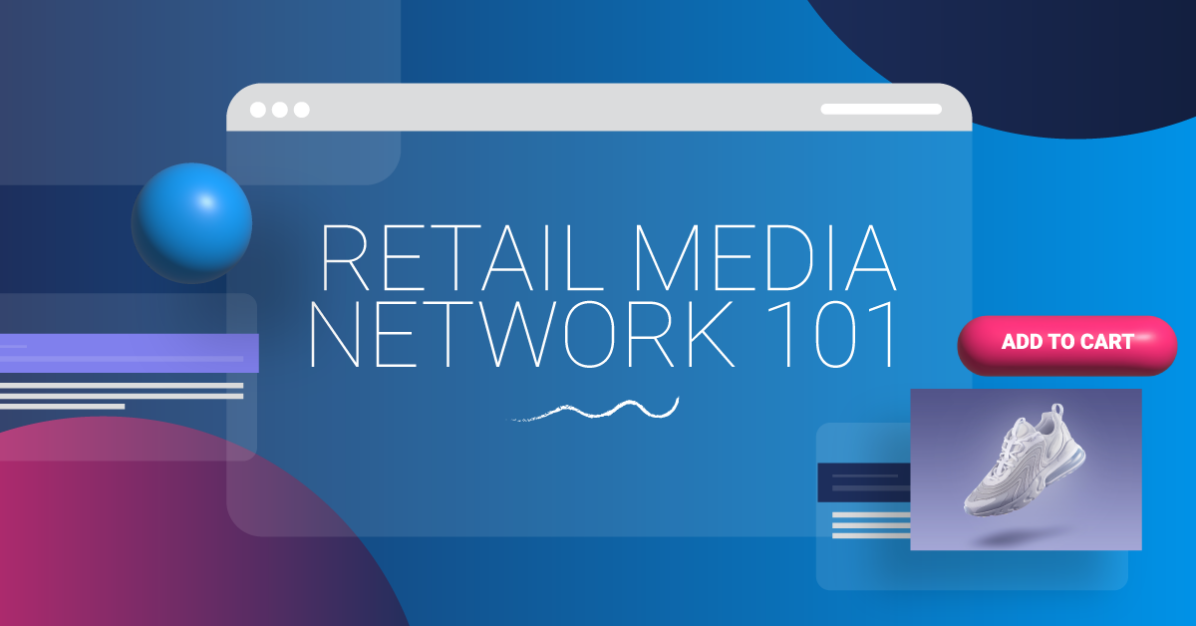TLDR: While still in its infancy, Retail Media Networks provide an exciting new framework for brands looking to make the most of their budgets while positioning themselves closer to their target audiences. This is especially valuable in an era of reduced signals, visibility and growing privacy legislation. RMNs help to fill the gap with privacy-compliant first-party data and round out a brand’s marketing strategy.
Retail Media Networks; What Are They?
In the dynamic landscape of digital advertising, staying ahead of the curve is not just a choice—it’s a necessity. As brands navigate the ever-evolving consumer journey, one revolutionary tool has emerged as a game-changer in the realm of targeted advertising: Retail Media Networks (RMN).
At its core, a Retail Media Network is a curated advertising platform embedded within retail environments, both online and offline. It’s a strategic convergence of commerce and advertising, where brands can engage with consumers in the very places and platforms where purchasing decisions are made.
And, because we’d be remiss not to mention, AdParlor can help brands and retailers take their RMN offering one step further to rounding out their ecosystem. Read on to learn how or get in contact here!
To comprehend the significance of Retail Media Networks, let’s delve into the mechanics of how these networks operate and the unparalleled opportunities they offer for brands to captivate their audiences.
Understanding the Mechanics of RMNs 🔧
Before the advent of Retail Media Networks, brands had limited control and visibility when advertising through retailers. RMNs have revolutionized this landscape, offering brands enhanced access to first-party data and insights across various retail media channels, including websites, mobile apps, streaming services, in-store placements, OOH, email, and social media platforms, among others. One common example that most people are familiar with would be Amazon; as you may be browsing the app or searching for a product, the occasional sponsored product related to your search or recent on-app behavior appears on your screen. This is just one example, but it helps illustrate the efficacy of these RMNs and the value they can provide brands.
From a brand’s standpoint, the value proposition of retail media networks is its ability to reach highly targeted and relevant audiences at or near the point of sale. As seen in this article by Insider Intelligence, the benefits of retail marketing networks can be broken down into the following:
Benefits of Retail Media Networks:
- Access to First-Party Data: Utilizing retailers’ first-party data, including loyalty program information, enhances ad targeting.
- Proximity to Point of Sale: Closer proximity to the point of sale increases the likelihood of ad conversions.
- Leveraging Existing Relationships: Capitalizing on pre-existing relationships between brands and retailers as well as relationships between retailers and customers, for more effective advertising.
- Capitalizing on Ecommerce Growth: Taking advantage of the rising trend in ecommerce sales.
- Diversifying Revenue Streams: Creating additional revenue streams beyond traditional retail sales.
RMNs provide brands with a new unbridled connection to their target audiences, allowing them to focus more on acquisition and growth while leveraging the retailer’s brand recognition.
RMN Forecast 📈
While RMNs aren’t an entirely new concept, their adoption as a marketing tactic has surged in recent years. The genesis of retail media networks could arguably be attributed to Amazon and the shifts in consumer purchase behavior over the last several years (accelerated by the effects of pandemic lockdowns). There was a profound need for new outlets to reach consumers where they were shopping most often.
In recent years, the use of RMNs as a marketing tactic has grown exponentially. In 2023, approximately 1 in 6 media dollars spent on digital ads in the US went to RMN, according to a forecast by eMarketer. Not only that, retail media ad spend in general is expected to continue above average growth over the next few years, even outpacing previous forecasts (Source: Insider Intelligence, Nov 2023 Forecast update).
Its meteoric rise to fame can be attributed to a few factors.
- First, it should be no surprise that ecommerce sales have grown, especially post-COVID as customers have become increasingly accustomed to shopping online and DTC companies try to compete with players like Amazon and Walmart. In fact, according to a quarterly report by the Department of Commerce, e-commerce sales accounted for 15.6% of total U.S. retail sales in Q3 2023, continuing an upward trend after some post-pandemic re-correction. As the share of e-commerce sales continues to grow, complementing off-line sales, the need for an omni-channel approach is becoming increasingly necessary.
- Second, in a world of growing privacy concerns, reduced access to third party data, and threats of cookie depreciation, RMNs provide brands with access to privacy-compliant first party data, something that has traditionally only lived within a retailer’s or platforms walled gardens.
Lastly, the continuing proliferation of ad formats has widened the scope of reach opportunities for retailers and brands. While retail media network spend primarily started with on-site display and search, these networks have been working to expand placement opportunities to other retailer-owned channels like CTV and social media, among others, to reach consumers at every point in the funnel.
And this is where AdParlor comes in. Retail Media Networks as a whole are still in their infancy. Retailers, brands, and marketers are still experimenting, establishing benchmarks and best practices. While RMNs are most familiar with being on-site and close to the point-of-purchase, reaching customers, existing and new, on less-direct channels is still new territory. As platform adoption and social commerce continues to grow and younger generations account for more of the buying power in the US, utilizing paid social media within an RMN strategy will only continue to become more imperative.
In fact, according to a survey conducted by ISCS in June 2023, 85% of Gen Z respondents cited that social media influences their purchasing decisions. Not only that, approximately 50% of Gen Zers and 51% of millennials social media users report making purchases on social media, compared to 38% of adults overall (source: 2022 Insider Intelligence survey). Paid social offers a full funnel approach to reaching consumers, especially younger demographics, off-site to drive conversions and grow the prospective funnel.
Navigating Barriers
Despite the promising landscape, as with any new territory, RMNs also face a few challenges:
- Measurement & Benchmarks – While RMNs provide a number of attractive benefits to brands, one drawback of a budding new vertical is the lack of consistency across benchmarks. With a growing number of options available to vendors looking to include RMNs in their strategy, it can be difficult for brands to compare, estimate, and gauge results. Which segues well into the next barrier; measurement. Similar to the difficulty of comparing benchmarks, measurement may be a concern, especially when comparing multiple RMN results.
- Standardization – or lack thereof – across measurement, benchmarks and even offerings has proven to be a tricky landscape to navigate for many. While standardization could revolutionize RMNs, it’s unlikely it will ever reach the same level of uniformity that we’ve seen across other channels like search. However, in January of 2024, the IAB released their final IAB/MRC Retail Media Measurement Guidelines to help kickstart the process.
- And of course, the exponential growth of RMNs is likely to create its own barrier as it becomes more standard practice. While we are still in the early stages of this new model, as the space becomes more saturated, RMNs will have to work to set themselves apart and identify key value propositions to stand out.
About the Author: Chase Fortune, Account Manager

Chase, a veteran marketer, joined the AP crew in 2021 as a strategic Account Manageer. His passions? CrossFit 🏋 and pizza 🍕 junkie (it’s called balance, right?!)
What he’s watching and loving lately: Outlander and Resident Alien *but he’s also recently
taken up juggling, which might be cooler than the above.
